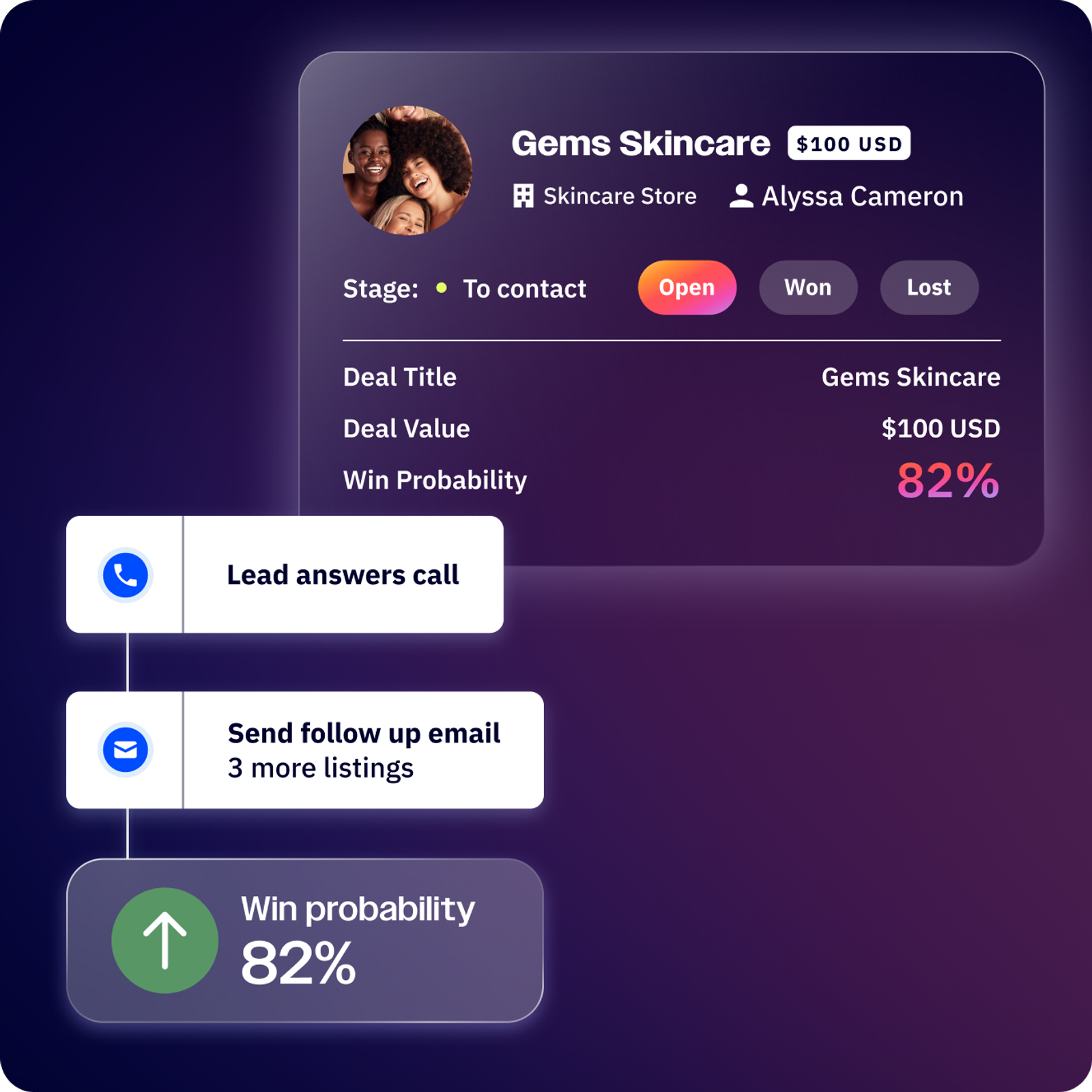Sales routing is the process of automatically assigning new leads or deals to the most appropriate sales representative or team. ActiveCampaign’s sales routing eliminates manual effort and potential for error in lead distribution. By automating assignments, your team saves time previously spent on sorting and assigning leads, allowing them to focus immediately on engagement. It also ensures balanced workloads and prevents leads from falling through the cracks, leading to faster follow-up times and improved sales efficiency.
ActiveCampaign’s sales routing is highly customizable. You can define specific rules and conditions to match your unique sales process and team structure, like setting up round-robin assignments, routing based on rep expertise, lead scores, or any custom field data you have for your contacts and deals, like lead source, geographic location, deal value, or product interest. This flexibility makes sure that the right sales rep receives the right lead at the right time, preventing delays and maximizing conversion opportunities.
Sales routing seamlessly integrates with other ActiveCampaign features like automations, lead scoring, and CRM pipelines.






